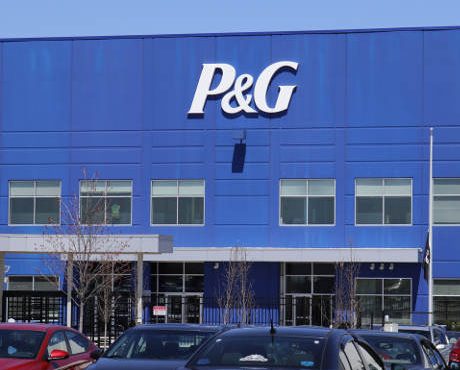Time to Load Up on PG Stock?
To income investors, Procter & Gamble Co (NYSE:PG) needs no introduction. As one of the most established consumer staples companies in the world, P&G has been rewarding shareholders with increasing cash dividends for decades.
Most recently, however, PG stock hasn’t been a hot commodity. Year-to-date, shares of Procter & Gamble Co plunged more than 15%, which was quite a tumble for a giant company commanding nearly $200.0 billion of market capitalization.
Still, with this downturn, Procter & Gamble stock could represent an opportunity, at least according to a simple strategy known as “Dogs of the Dow.”
Basically, the strategy says that, at the end of the last trading day of the year, an investor would buy the 10 stocks in the Dow Jones Industrial Average (DJIA) with the highest dividend yield. Each of these 10 companies would have an equal dollar amount in the investor’s portfolio.
Then the investor would hold these shares for one year and repeat the yield-based selection process at year-end.
At the end of 2017, PG stock closed at $91.88 apiece. Based on its then-quarterly dividend rate of $0.6896 per share, the company had an annual yield of three percent at that time.
A three-percent yield might not seem like much. However, it made Procter & Gamble Co the ninth highest-yielding stock among the Dow 30 companies at the end of last year. Therefore, PG stock was added to the 2018 Dogs of the Dow list.
Procter & Gamble Co Yield Keeps Climbing
And that was just the start. Investors should not forget how dividend yield is actually calculated. You take a company’s annual cash payout and divide it by the stock price.
As I mentioned earlier on, PG stock has had quite a tumble so far this year. Due to the inverse relationship between yield and price, the drop should allow the company’s yield to move higher.
Moreover, on April 10, Procter & Gamble announced a four-percent increase to its quarterly dividend rate to $0.7172 per share. (Source: “P&G Declares Dividend Increase,” Procter & Gamble Co, April 10, 2018.)
With a higher cash payout and a lower price, PG stock now yields 3.7%, making it the fifth-highest-yielding name among all 30 components of the Dow Jones Industrial Average.
Now, you are probably thinking, a high dividend yield often turns out to be a sign of trouble. Why would a strategy call for buying the highest-yielding companies?
Well, the reason is simple. This strategy does not tell you to buy just any high-yield stock; it only tells investors to load up shares of high-yield Dow 30 companies.
And for those not in the know, the Dow 30 companies are some of the most established businesses on the entire planet. Each of these companies has a deeply entrenched positioned in its respective markets. And quite often, they turn out to be market leaders.
To give you an idea of how difficult it is to become a member of this elite group of stocks, here’s a fact: Broadcom Inc (NASDAQ:AVGO), a global semiconductor leader with more than $100.0 billion of market capitalization, is not a Dow 30 company.
Why PG Stock Could Offer Oversized Returns
In other words, the Dogs of the Dow strategy assumes that the Dow 30 companies have rock-solid fundamentals. And a high dividend yield often means that the stock is temporarily out of favor. Once the market realizes the company’s strengths again, the stock could provide significant upside potential. At the same time, investors get to earn oversized dividends.
Historically, this simple strategy has provided some more-than-decent results. From 2000 to 2016, the Dogs of the Dow strategy delivered an average annual return of 8.6%, beating the Dow Jones Industrial Average’s average annual return of 6.9%. (Source: “Dogs of the Dow Total Return: Dog Years,” Dogs of the Dow, last accessed July 3, 2018.)
Of course, the assumption that every Dow 30 company is rock-solid might not always be true. So it’s important to check whether a high-yield Dow component is in good shape.
In the case of Procter & Gamble, things look pretty good. In the third quarter of its fiscal-year 2018, which ended March 31, net sales grew four percent year-over-year to $16.3 billion. (Source: “P&G Announces Third Quarter Earnings,” Procter & Gamble Co, April 19, 2018.)
The bottom line was equally impressive. For the quarter, Procter & Gamble earned a core net income of $1.00 per share, up four percent from a year ago.
Bottom Line on Procter & Gamble Co
Going forward, management expects the company’s core earnings per share to increase six to eight percent in full-year fiscal 2018. If Procter & Gamble achieves the midpoint of its guidance range, it would earn a core net income of $4.19 per share. Note that this amount would provide more than enough coverage of its expected total dividend payment of $2.786 per share for the full fiscal year.
With generous dividends backed by strong financials, PG stock could be a winning pick in this year’s Dogs of the Dow strategy.
